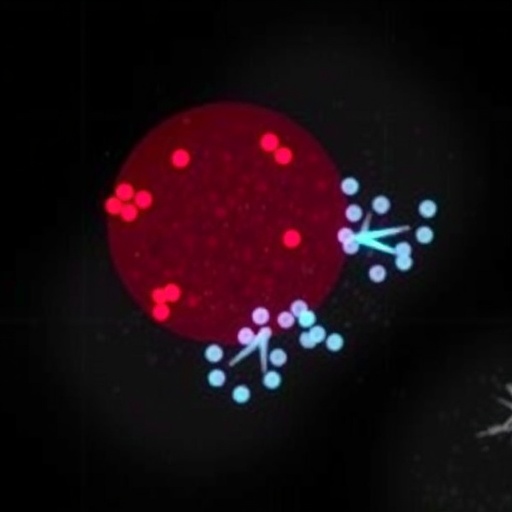PROTECT YOUR DNA WITH QUANTUM TECHNOLOGY
Orgo-Life the new way to the future Advertising by AdpathwayIn an era where minimally invasive surgical techniques are redefined, the advent of unilateral biportal endoscopy (UBE) marks a significant advancement in neurosurgery, particularly for the treatment of complex thoracic spinal pathologies. The recent case report and literature review conducted by Huang, Liao, and Liu sheds light on the strategic application of UBE in addressing high-grade thoracic spinal meningiomas—tumors that, while often benign, can exert profound effects on neurological function due to their location and growth patterns.
Unilateral biportal endoscopy leverages two small incisions—one for the camera and the other for surgical tools—which offers several advantages over traditional open surgical techniques. Among these benefits are reduced tissue trauma, lower postoperative pain, and shorter recovery times. These enhanced outcomes make UBE an attractive option for patients facing invasive surgeries traditionally associated with prolonged hospital stays and extensive rehabilitation programs.
The thoracic spine’s unique anatomy presents challenges in accessing lesions efficiently and effectively. The neural and vascular structures, combined with the intricate bony architecture of the thoracic region, underscore the need for precision when addressing tumors. High-grade spinal meningiomas, though rare, can pose a significant risk by not only compressing the spinal cord but also impacting surrounding nerves and blood vessels, necessitating a carefully orchestrated surgical approach to mitigate risks while ensuring maximum tumor resection.
In their investigation, Huang and colleagues provide a comprehensive overview of a patient case, illustrating the efficacy of UBE through meticulous detailing of the surgical procedure, from preoperative preparations to postoperative outcomes. This case exemplifies the protocol established for handling high-grade meningiomas with the UBE method, highlighting the critical aspects of patient selection, surgical techniques, and interdisciplinary collaboration in neurosurgical practice.
Furthermore, the review component of the article synthesizes data from prior studies, establishing a growing body of evidence that supports UBE as a standard method for managing thoracic spinal tumors. The authors critically analyze various metrics of success, including tumor resection rates, surgical complications, and functional recovery, shedding light on the evolving landscape of spinal surgery.
Central to their findings is the emphasis on tailored surgical strategies designed to accommodate the unique anatomical variabilities inherent to each patient’s condition. By employing UBE, surgeons can navigate the complex three-dimensional landscape of the thoracic spine while minimizing collateral damage to surrounding tissues, thus enhancing the overall safety and effectiveness of the intervention.
The article also delves into the technical aspects of UBE, elaborating on the specific instruments utilized, including high-definition endoscopes and specialized surgical tools, that maximize visualization and maneuverability. Key to the success of the procedure is the ability to operate within confined spaces while maintaining a clear view of the surgical field, a feat that traditional surgical methods often struggle to achieve.
As the authors recount the patient’s journey from diagnosis through surgery to postoperative care, they relay the importance of a multidisciplinary approach adopting the input of oncologists, radiologists, and rehabilitation specialists. Such collaboration ensures that all aspects of the patient’s health are addressed, thereby optimizing recovery trajectories and enhancing surgical outcomes.
The integration of advanced imaging techniques preoperatively allows for precise localization of the tumor, resulting in a more strategic surgical approach. This imaging not only aids in planning the operation but also provides critical insights into the relationship between the meningioma and adjacent nervous structures. This precision is paramount in high-stakes environments where the margin for error is minimal.
While the findings are promising, Huang and peers remind the reader that ongoing research is necessary to further solidify the role of UBE in managing thoracic spinal meningiomas. Each case can offer valuable insights into refinement of techniques, improving patient outcomes further. The surgical community must continue to share experiences and outcomes, establishing a robust database that will facilitate a deeper understanding of the effectiveness of UBE compared to existing methods.
Moreover, the potential of UBE extends beyond just meningiomas; it opens avenues for addressing a range of spinal pathologies, thus transforming the traditional landscape of spine surgery. Evolving technologies, such as augmented reality and enhanced imaging modalities, may complement UBE, encouraging further innovation within the field and ultimately improving patient care.
As patients and clinicians alike consider treatment options, the implications of this case report resonate with healthcare stakeholders, emphasizing the necessity for ongoing education around the emergence of minimally invasive techniques. The journey toward adopting UBE as a staple in neurosurgery reflects broader trends in medicine that prioritize patient-centered care and strive for safety and effectiveness above all.
In essence, the work of Huang, Liao, and Liu not only encapsulates a singular case but also represents a pivotal moment in the legacy of spinal surgery, positioning unilateral biportal endoscopy as a transformative approach. This report serves as a clarion call for further studies and discussions in the field, encouraging neurosurgeons everywhere to reconsider traditional approaches and embrace innovative surgical techniques to enhance outcomes for patients battling daunting spinal tumors.
The exploration into UBE for high-grade thoracic spinal meningiomas affirms that the future of neurosurgery lies in innovation, collaboration, and a steadfast commitment to patient care, reflecting a paradigm shift that is likely to reverberate through the annals of medical history.
Subject of Research: Unilateral Biportal Endoscopy for High-Grade Thoracic Spinal Meningiomas
Article Title: Unilateral biportal endoscopy for the treatment of high-grade thoracic spinal meningioma: a case report and review of the literature.
Article References:
Huang, W., Liao, J., Liu, T. et al. Unilateral biportal endoscopy for the treatment of high-grade thoracic spinal meningioma: a case report and review of the literature.
J Cancer Res Clin Oncol 151, 289 (2025). https://doi.org/10.1007/s00432-025-06343-2
Image Credits: AI Generated
DOI: 10.1007/s00432-025-06343-2
Keywords: Unilateral Biportal Endoscopy, High-Grade Thoracic Spinal Meningioma, Minimally Invasive Surgery, Neurosurgery, Surgical Techniques, Patient Outcomes.
Tags: advantages of UBE in neurosurgerycase report on spinal meningiomaendoscopic surgical approacheshigh-grade spinal tumorsliterature review on neurosurgery techniquesminimally invasive neurosurgeryreduced postoperative pain and recoverysurgical techniques for spinal surgerythoracic spinal meningioma treatmentthoracic spine anatomy challengestumor compression in spinal cordunilateral biportal endoscopy


 9 hours ago
8
9 hours ago
8





















 English (US) ·
English (US) ·  French (CA) ·
French (CA) ·